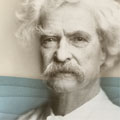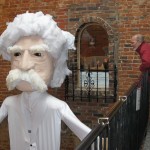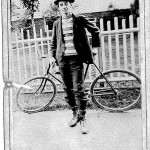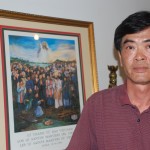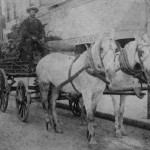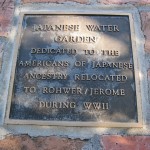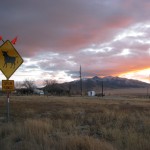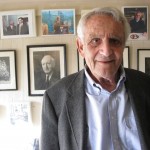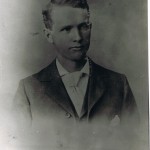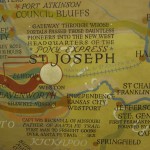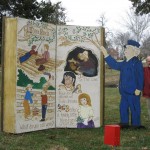I remember Ernest Withers of Memphis as a distinguished civil rights photographer, whose message to journalism students at Emory and Northwestern Universities, when I invited him to speak, was more spiritual than shutter-speed, f-stop practical.
Shortly before he died, Withers told a Northwestern class on Dr. Martin Luther King Jr. Day that the most important quality of a photographer’s work was its honesty: “Is it true? Does it hurt? What good does it do?”
Withers’ work—he shot more than a million photos—rose at times to that level where a picture becomes a defining icon of an era, an image that so repulses or engages us that it brings some slight change in us. Most great photographers are remembered, at best, for one such image.
Withers shot several—his photo of massed “I Am A Man” marchers, of Dr. King and Dr. Ralph Abernathy sitting in the front of the bus, and of the beaten face of Emmett Till, a black 14-year-old from Chicago tortured and murdered in Mississippi for allegedly whistling at a white woman.
Photographer Carl Mydans once said, “Behind the camera there must be a man’s eye, and a soul.” A soul. I feel that Withers’ photos showed his soul. So I was especially troubled when—three years after Withers’ death in 2007 at age 85—a report by Marc Perrusquia in The Commercial Appeal, Wither’s hometown paper, concluded that he had doubled as FBI informant to spy on the civil rights movement.
While in Memphis, I wanted to talk with Perrusquia and Withers’ daughter, Rosalind, president of the Withers Collection Museum and Gallery. What about Ernest Withers, FBI spy?
In our interview, Rosalind stresses her father’s efforts to help the civil rights cause, saying he was “very, very much a part of the movement.” And the movement, she says, echoing Andrew Young, pursued a policy of being transparent about its activities, especially with FBI agents, who, unlike local police, were seen as protectors of the movement.
She acknowledges her father’s role as FBI informant. But she recalls his career in law enforcement—as one of Memphis’s first black police officers, Tennessee Alcoholic Beverage Commission agent and county constable: “Once a policeman is always a policeman.” He felt he was providing information for life and safety, she says, helping the FBI, for example, derail the Invaders, a black militant group feared by city leaders.
If the FBI paid her father, Rosalind says, it was for the photos that the agency requested of him. She feels certain he would never have used his photos to hurt the civil rights movement, its leaders or their reputations.
She recalls that, following Dr. King’s assassination, her father was the only photographer invited into the hospital to shoot the blood-stained corpse. The photos could have made Withers a lot of money. But he told a King funeral organizer, Rosalind recalls, “I’m not going to take a picture of him that way. When you suit him up I’ll release that picture to the nation.”
Perrusquia of The Commercial Appeal agrees that Winters was “a kind-hearted guy” who possibly saw his work for the FBI informing on Black Panther-style militants as a “vital function for law and order.” But Withers also “was a very complicated guy, let’s put it that way,” Perrusquia adds.
Withers was paid little for his photography and struggled financially to raise eight children. Perrusquia quotes a federal source who said Withers was driven by a need for money. That need, Perrusquia suggests, led Withers to participate in a corrupt system. In various law enforcement roles, Perrusquia says, Withers was not immune from kickbacks—“cash for pardons” and “cash for bribes.”
Perrusquia’s pursuit of Wither’s sealed FBI informant file continues, part of a Commercial Appeal investigation that thus far has cost the paper $80,000 in legal fees. The investigation could reveal the length of Withers’ service to the FBI, what the service entailed and how much he was paid for it.
Whatever the investigation reveals, I will remember forever Withers and his courageous coverage of the civil rights movement. As Perrusquia, in fairness, wrote in his article: Withers defied a judge’s order that banned picture-taking during the Emmett Till murder trial and “captured the moment Till’s great-uncle Mose Wright stood up at the witness stand and pointed an accusing finger at the killers.”
Withers, as Perrusquia also wrote, endured harassment in Mississippi following the 1964 murders of three civil rights workers and a police beating covering Medgar Evers’ 1963 funeral. I like to believe that the soul of Withers lives on in the honest photos he so bravely shot.
Loren Ghiglione
